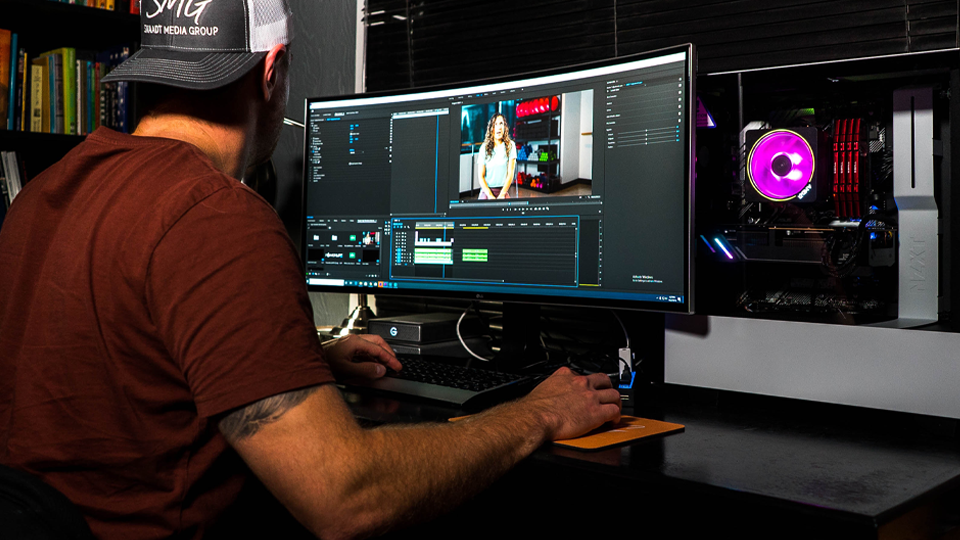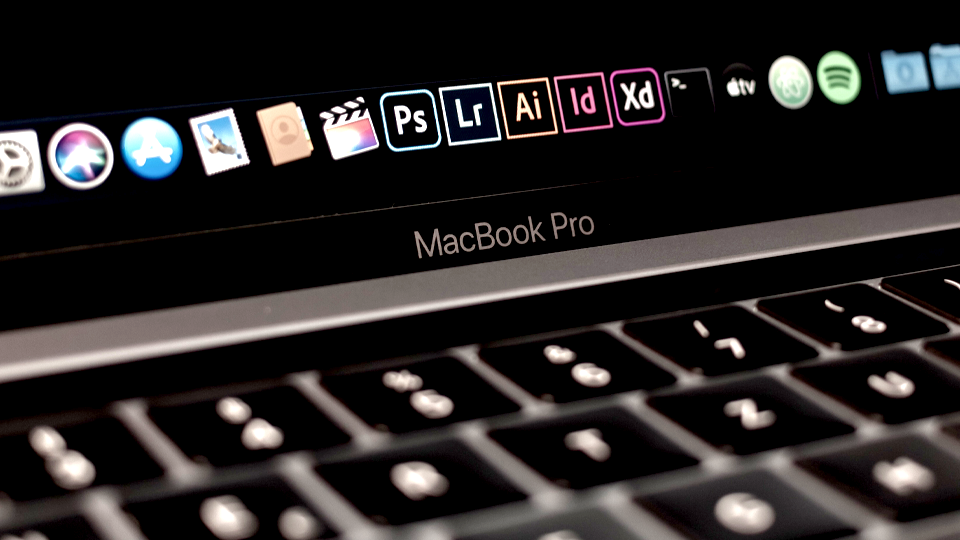How it works: The technical advantage of Suite’s cloud storage

Mike Hering

12 Minutes

In this post, we’ll discuss how Suite compares to other major storage solutions. There are multiple key differences:
- Suite is a filesystem, not an application. It handles data & metadata as such.
- Suite mounts as a local drive on any number of computers, regardless of their location.
- Suite is a cloud-native filesystem, which means it operates the same as a local NAS, but you can access it on your device from anywhere with an internet connection.
We’ll also dive into the technical details that set Suite apart. There are some key distinctions:
Suite vs Dropbox, WeTransfer, Google Drive, etc.
—> what it really means: Filesystem vs Automated Transfer Application
Suite vs Shipping Hard Drives
—> what it really means: Filesystem vs Manual Transfer Process
Suite vs On-prem NAS accessed locally or through a VPN
—> what it really means: Cloud-native Filesystem vs Local Filesystem shared via network
Suite redefines the concept of remote collaboration by offering an experience akin to working with a local NAS, but with the benefits of staying connected to your files, without having to download or sync them, from anywhere with an internet connection. This technical deep dive is designed to help everyone better understand how Suite’s cloud storage fundamentally changes the game for creative teams. By exploring the technical nuances of our product while providing explanations/definitions of important high-level concepts, we aim to “lay it all out” and equip you with the knowledge you need to make informed decisions about upgrading your studio workflow.
PART ONE: Making Distinctions
If you ask different members of the creative industry, the term “Traditional Cloud Storage” can mean a number of different things. If you ask a software engineer, they might reference Amazon S3. If you ask a young creative, they may talk about Dropbox or Google Drive. If you ask a tenured editor, they may describe something like an on-prem NAS/SAN and a VPN. Suite is fundamentally different from each one of these in distinct ways.
Data vs Metadata:
The short version — Filesystems like Suite can treat data and metadata independently, whereas applications just send that information as a pair between different filesystems.
Now, let’s start with our basic understanding of a file. A file consists of two parts: data & metadata. The data is the 1s and 0s that make our media come to life on the computer screen. The metadata is the name, the size, and the location (folder) of the file within the filesystem. In many file systems, data and metadata live in one confined location, ie. within a local drive, which makes changes easy when working locally/individually; as soon as other collaborators need to access those media files, however, the way this data and metadata are stored within that local filesystem prevents maximum workflow flexibility.
With Suite, data and metadata are treated independently from one another, which means you can browse the filesystem, find your files, and start working immediately without the need to download the data for those files first. Suite automatically pulls the exact pieces of data that you need, in-real time, as you need them; in plain terms, instead of requiring users to download an entire file before working on it, Suite intelligently streams the data and metadata needed in that moment from the cloud, enabling real-time editing for anyone connected to the Suite Drive.
Filesystem vs Application:
Let’s move along to consider how a computer makes files usable. When you click “play” on a video file, have you ever thought about what’s really happening? Have you considered the computer code that makes it all work?
There’s a distinction to make between two types of software: a filesystem and an application. While an application—such as Adobe Premiere Pro, Davinci Resolve, or any number of other creative software—is requesting to read the video file, it’s actually the filesystem that goes out, finds the right data on the machine/server, and hands it back to the application to play/edit it.
In many workflows, the filesystem is completely self-contained on that drive, like when media lives on an external hard drive or SSD. When “formatting” a hard drive, teams might select apfs or NTFS filesystems; these are invisible pieces of software that, when an application says “play,” for instance, knows where to find the corresponding file(s) on the SSD and hand their data back to the application requesting it. SMB/NFS filesystems allow applications running on multiple computers to read and write to a shared drive strictly within a local network.
Now we’ll make one of the most important clarifications we can: Dropbox, WeTransfer, Google Drive, etc. are not filesystems—they are simply applications, just the same as Premiere Pro, After Effects, Finder or File Explorer—that attempt to keep separate filesystems in-sync with each other by transferring data between them.
But rather than managing time-consuming workflows where you have to constantly transfer files between isolated devices and filesystems, wouldn’t it be better to have just a centralized, globally accessible filesystem that enables real-time connectivity between creatives and their files?
Suite is a filesystem. Applications like as Adobe Premiere Pro or After Effects talk directly to Suite to read and write media files as you and your creative team edit them. Suite is unique and enables data, read-to or written-by an application, to be stored in the cloud, shared between an unlimited number of users, and optimized for high-performance, highly distributed workloads.
When one user uploads or saves a file on the shared Suite Drive—more literally, the Suite cloud-native filesystem—that data becomes instantly available to everyone on your team without having to download or make a copy of the media. Simply put, Suite is a filesystem that everyone anywhere has access to, so when you make changes in Premiere Pro or whichever creative application you use, every asset automatically updates on everyone else’s device the moment you press “save.”
PART TWO: The Technical Details
Suite vs Dropbox, WeTransfer, Google Drive, etc.
—> what it really means: Filesystem vs Automated Transfer Application
Suite vs Shipping Hard Drives
—> what it really means: Filesystem vs Manual Transfer Process
When you examine the technical nuances that define the methods teams use to store and share media traditionally, it’s interesting how utterly similar sync solutions are to the method of shipping hard drives. Each scenario results in basically the same process—a manual file transfer.
Consider this: You have files stored on one SSD that you want to share with someone else. Without a sync solution, you might copy those files to another drive, and mail it to someone. When they receive the drive in the mail, they now have a copy of the files from your machine.
You might instead use an automated file transfer service like WeTransfer, Google Drive, Email, etc, where you must upload your files to the cloud services first; then the other person downloads a copy of that media onto their local machine.
Furthermore, teams or individuals with an extra knack for technology might upload files directly to a proprietary Amazon S3 bucket—but even in this scenario, remote employees must still implement a process of downloading and copying those files to their local SSD before working.
In short, manual file transfers and automated, or “traditional” sync solutions both operate on the same principals—each requires users to make separate copies of files on separate file systems. Notably, in these filesystems, data and metadata live as one; and when transferred via sync solutions, they travel as one. So, it maintains that every time you manually transfer a file, or a sync solution does it automatically for you, a new file is created on a separate filesystem.
Suite is different. Unlike an application that transfers files between disparate filesystems, Suite is itself a filesystem that mounts as a local drive on any number of disparate computers.
Suite vs On-prem NAS shared via VPN
—> what it really means: Cloud-native Filesystem vs Shared Local Filesystem
Choosing to use an on-prem NAS server is a great option for 100 percent in-person workflows, but it’s inherently limited to that local network, or a virtualized local network via a VPN.
In order to access an on-prem NAS and perform creative tasks with adequate performance, workstations need to be located physically in the same network as the server. While remote users may be able to connect this setup via a VPN, their performance is likely to suffer.
Simply put, the on-prem NAS workflow works nicely for fully in-house teams, but breaks down quickly once remote work is introduced. In today’s creative landscape that sees continued growth in remote work, the limitations of on-prem NAS setups become increasingly apparent.
This is one key difference between on-prem NAS deployment and Suite: On Suite’s cloud-native distributed filesystem media (data) can be accessed, changed, renamed, relocated, saved, etc. from anywhere, by an unlimited number of people, with zero performance impacts. Thanks to the way Suite operates—ie. how our cloud-native filesystem handles data & metadata—it can provide the same high-quality performance as an on-prem NAS, but offers real-time connectivity to every media asset by intelligently streaming the data you need directly from the cloud from anywhere with internet connectivity.
Suite supercharges hybrid workflows.
At Suite, we’re here to serve the growing interest of these hybrid-style workflows. In these scenarios, teams might have offices in a few, select major cities where employees come into the studio everyday to work in-person; these companies often operate by running fleet of workstations connected to a large, on-prem NAS server. Suite is designed to integrate seamlessly alongside your existing on-prem hardware and systems, combining the benefits of a cloud-based filesystem with the reliability and performance of on-prem hardware.
Why Suite?
Suite is not a transfer application. It is not software on top of an existing technology. Suite is cutting-edge tech that revolutionizes remote collaboration—it’s a cloud-native filesystem that allows teams to collaborate from anywhere while working just like you would off of a local drive.




































